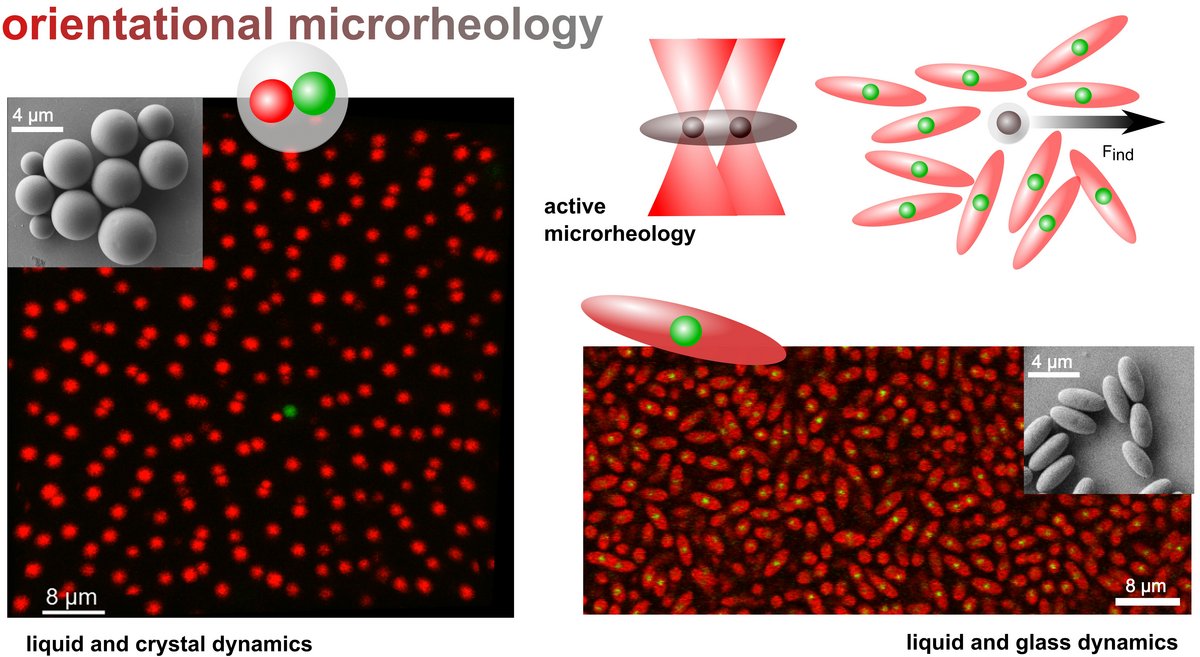
Optical microscopy of colloidal suspensions
Suspensions of colloidal particles, i.e. particles on a size scale ranging from a few nanometers to several micrometers, are of great practical importance. Apart from many technically important examples, colloidal suspensions are also omnipresent in food products and cosmetics. Colloidal suspensions are, however, also interesting from a basic scientific point of view, since they can serve as model systems for atomic or molecular systems. In contrast to these, the movement of colloidal particles can be followed using optical microscopy, which gives much more detailed insight into their behavior, than averaging techniques, which are commonly applied to investigate atomic systems. Our aim is to investigate polymer colloidal suspensions with advanced optical microscopy, which allows us to observe colloidal systems with single particle resolution. For this purpose, we synthesize different types of novel polymer colloids which allow us to study orientational as well as translational colloid dynamics.
Orientational microrheology
Modern approaches to colloidal science include particle synthesis, experimental investigations of suspensions, simulation of data and the use of appropriate theory for data analysis. Concerning the dynamics of colloidal polymer particles, a lot of the research has been dedicated to investigating the translation of spherical particles. Our approach is to introduce anisotropy to the colloidal systems. By following the thermal motion of the particles ("passive microrheology") or by actively exerting forces and torques on them ("active microrheology") we can address three important topics:
In order to analyze rotational dynamics, some kind of particle anisotropy is required. So far, this could only be obtained by labelling one side of the colloidal surface with metal films (so called Janus particles) or by synthesis of non-spherical rotational tracers. Our approach is to prepare core/shell colloids with intrinsic anisotropy, meaning two or more cores in on spherical colloid. Innovative labelling strategies allow us to get full 360° resolution of rotational dynamics of our spherical colloids without changing the chemical properties of the colloid.
Our second approach is to break the spherical symmetry of the colloids in order to investigate phase transitions. For this purpose we introduce ellipsoidal particles with low polydispersity on a broad range of aspect ratios. With our preparation strategy, we can adjust the key parameter of the colloids to get access to the several system properties, like translational and rotational dynamics and phase transition phenomena, especially in the dense regime towards crystallization and glass formation.
Apart from the observation of undisturbed colloidal systems, we also manipulate colloids actively using optical tweezers. Optical tweezers are widely used in soft matter physics and biophysics. They enable us to exert external forces and torques on single tracer colloids which are added in dilute or dense suspensions. Our aim here is to analyze the response of the surrounding system on a large scale. We combine different geometries for these measurements and compare and discuss the influence of shape, density and applied forces of these systems.
Published in:
M. K. Klein, N. Klinkenberg, S. Schuetter, N. Saenger, Nicolai, P. Pfleiderer, A. Zumbusch, "Core-shell microparticles with ellipsoidal, fluorescent cores: Accessing rotational dynamics", Langmuir, 31 (2015) 2655–2661.
M. K. Klein, N. R. Sänger, S. Schütter, P. Pfleiderer, A. Zumbusch "Shape-tunable core-shell microparticles", Langmuir, 2014, 30, 12457-12464.
M. K. Klein, A. Zumbusch* and P. Pfleiderer, "Photo-crosslinkable, deformable PMMA colloids", J. Mat. Chem. C, 1 (2013) 7228-7236.
S. Schütter, J. Roller, A. Kick, J.-M. Meijer, A. Zumbusch “Real-space imaging of translational and rotational dynamics of hard spheres from the fluid to the crystal“, Soft Matter, accepted for publication.
